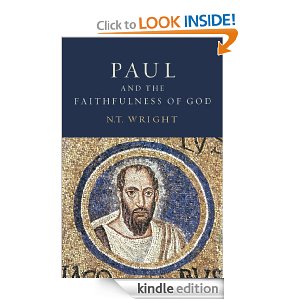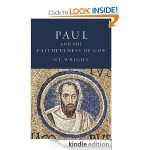In Chapter 4 (pp. 246-78) we have a very useful survey of what has come to be called ancient Greek and Roman religion (not to be confused with philosophy which was treated in the previous chapter). Wright is correct to stress that ancient religion was all about praxis, and very little about beliefs or believing, nor was it much about ethics either. The essence of pagan religion was priests, temples, sacrifices, festivals, calendars, auspices and the like. On this showing early Christianity would not have appeared to be a religion to many people, especially since, even as over against its Jewish mother religion, it did not have sacrifices. It was only later that priests, temples, sacrifices came to be a part of Christian praxis. Furthermore, Wright is on target in stressing that religion was woven right into the very fabric of the ancient world. One could no more divorce religion from politics, than one could divorce sacrifices from religion in the ancient world. Religion and politics were not only not strange bedfellows, they regularly slept together and cross-fertilized!! This becomes especially evident when one examines the ‘new’ form of religion in the first century– the Emperor cult (the subject of Tom’s next chapter).
Nor were the ancients much like modern pluralists. Indeed they were sticklers for correct religious praxis– “they placed great importance upon accurate performance of time honored ritual and the precise wording of prayers.” (p. 248). To draw an analogy, they were like modern Hindus— polytheists to be sure, but pluralists, no.
Religious praxis was all about celebrating, placating, and supplicating deities, ‘keeping them sweet’ since as Greek and Roman mythology suggested, they could be temperamental, quixotic, erratic, unfair, etc. They were simply larger versions of humans with too much power and time on their hands. As Wright goes on the emphasize ancient ‘religion’ was in the main about community identity, community well being, not primarily about individual identity or individual benefit or blessing. Here Wright is in agreement with the warnings of E.A. Judge that modern conceptions of religion are wholly inadequate to deal with the diverse social nature of ancient religions. The word ‘religio’ itself meant scruple, and if you wanted to talk about what we call religion, threskia (worship) or eusebeia (piety) or latreia (service, more particularly religious service) would be more apt. The ancients did not think in terms of ‘a plurality of religions’. More like a plurality of religious praxis, though in the end they almost always were variations on a theme. Judge’s judgment is that Christianity was not at all religion in the sense we give to that term today, nor was it seeking to establish a ‘new religion’. Outsiders would have seen house church meetings as more like a meal and a philosophical discussion, or a collegia meeting. Wright thus concludes “There was thus a sphere of activity right across the ancient world, which symbolized a tangled network of beliefs, traditions, expectations, and not least a sense of civic identity and security.” (p. 250). ‘Religio’ meant authentic and national religious praxis, ‘superstitio’ exotic, suspect, and probably illegal praxis.
As Wright outlines, according to Cicero there were sort of three types of ancient religious praxis–traditional ritual involving sacrifices, another was inspecting entrails and other forms of auspices (bird flights, eclipses), and thirdly there were prophetic oracles or unique signs. Only the last of these really had any cross-over with early Christianity. The goal of religion besides those mentioned above was to determine the will of the deity, and then do it. Again the emphasis was on doing, not believing, though some basic nodal beliefs were presupposed (such as the existence of the gods). Religious mythology was the heart of ancient culture, painted on the walls of houses, enshrined in statues in the city and in the homes etc. One could no more separate religion from art, architecture and culture in general than one could separate it from politics. Thus…. “when Paul arrived in Ephesus, Philippi or anywhere else with a message about the one God and his crucified and risen son, h was not offering an alternative way of being ‘religious’ in the sense of a private hobby, something to do in a few hours on the weekend. He was offering a heart transplant for an entire community and its culture. If the centrality of Artemis was part of what it meant to be an Ephesian, it is not surprising that Paul’s ministry there caused a riot.” (p. 255). When things went wrong for a city, it was assumed to be because of poor or negligent religious praxis (see Livy, 5.52.1-3 for a quote that expresses this perfectly).
The review by Wright of Greek and Roman praxis is a good little primer, and I would say its well to pay especial attention to what he says about the Mystery cults, which did have more to do with individual transformation rather than civic maintenance. Sometimes a blissful afterlife was promised in some of the mystery cults, it would appear (cf. the mysteries of Eleusis, Dionysius, Isis, the tauroboleum etc.– pp. 263ff.). Wright also reviews home and hearth religion (the Lares, including the unique role of the genius of the head of the family, his spirit after he was deceased). Though Christians met in homes, they certainly did not further the praxis of existing Greco-Roman home religion. The head of the household is under the supervision of the Master, the deity, he does not become a guiding spirit post mortem. Wright then stress how ‘unreligious’ and indeed ‘anti traditional religion’ what Paul was doing would have seemed. He quotes Gordon to the following effect “It was only Christianity which refused sacrifice…[this] was in fact, the most uncompromising possible rejection of the civic model, and it marks off Christianity from all other organized sects in the Empire” (p. 273 n. 121) even from Judaism.
One of the more interesting questions is addressed by Wright on p. 275– was there a preparatio evangelicii in the Greco-Roman culture itself for Paul’s christological monotheistic message? “granted as most Romans did grant that the gods of the Roman pantheon were basically the same as the gods of the Greek pantheon,…could one straightforwardly assume that all peoples worshipped the same divinities… Were Magna Mater and Isis one and the same? And more radically still– were the many gods all simply manifestations of one single ‘divinity’, so that to theion would actually encompass the whole lot, perhaps even including the lesser daimones?… Monotheism of various kinds may indeed have been the implicit belief held by many.” Wright is correct however that Paul places a stress on belief in and of whom God is in a way that had never been center stage in pagan religion. Religion was about praxis, doing, and experiencing the deity perhaps, but far less about what one believed, much less some kind affirmation of a dogma or doctrine about this or that deity.
So Wright concludes “The Christians, from the start, behaved not as a new variety of pagan religion but as a new and strange variety of Judaism” (albeit without priests, temples, and sacrifices) (p. 278).
Tom begins the chapter attempting to deal with the slippery definitional issues when it comes to terms like ‘religio’














